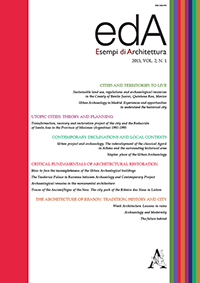Estratto da
ESEMPI DI ARCHITETTURA
International Journal of Architecture and Engineering
Urban Archaeology in Madrid, experiences and opportunities to understand the historical city
ESEMPI DI ARCHITETTURA
International Journal of Architecture and Engineering
Urban Archaeology in Madrid, experiences and opportunities to understand the historical city

In 2015, it will be thirty years since Spanish Historic Heritage Law from 1985 was approved. The results after three decades under this law are necessarily positive and witness how the complex autonomous regional legislation has been promoted, guided and organized in this Heritage field. In addition, the law enforcement has brought into the scene how the numerous public and private initiatives involved in caring, managing, protecting and restoring our cultural heritage have been channeled and regulated, as well as monitoring the impact these initiatives produce on urban archaeology. During this long period of Spanish recent history, cultural heritage -understood as an important development tool, especially when related to cultural tourism- has succeeded in channeling resources for developing the historical research projects, both documental and archaeological, that the Spanish monumental urban ensembles were requiring. In this context, the case of the city of Madrid is a clear example of the significant development that urban Historical Archaeology has experienced in Spain over the last thirty years, especially when dealing with the study of the Middle Ages (8th to 15th centuries) and the Modern Age (16th to 18th centuries). Given the number of interventions and the important results obtained by many of them, Madrid urban archaeology is an extraordinary example of the consequences of implementing new management models, changing criteria and operating procedures, and also, of course, of the conflicts and debates raised regarding heritage, as well as the importance these interventions have implied, which is the main aim of this work.
| pagine: | 21-36 |
| DOI: | 10.4399/97888548858683 |
| data pubblicazione: | Luglio 2015 |
| editore: | Aracne |








